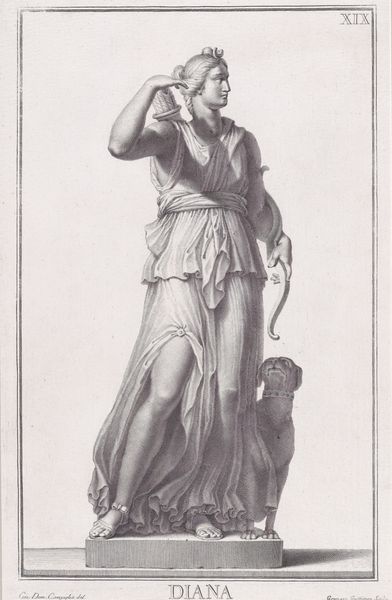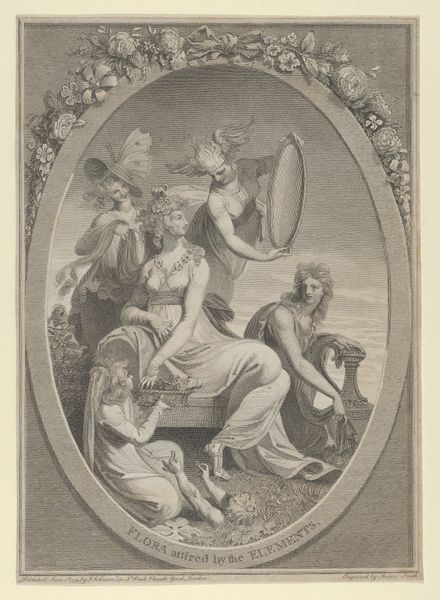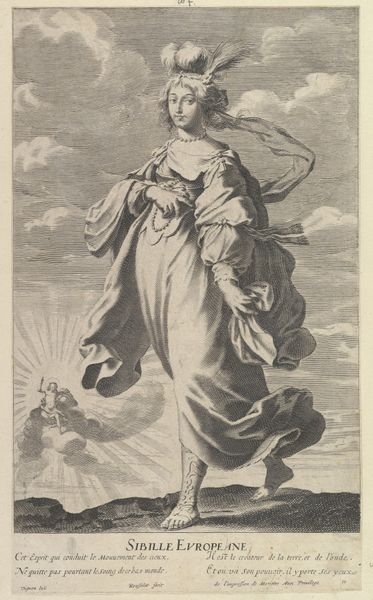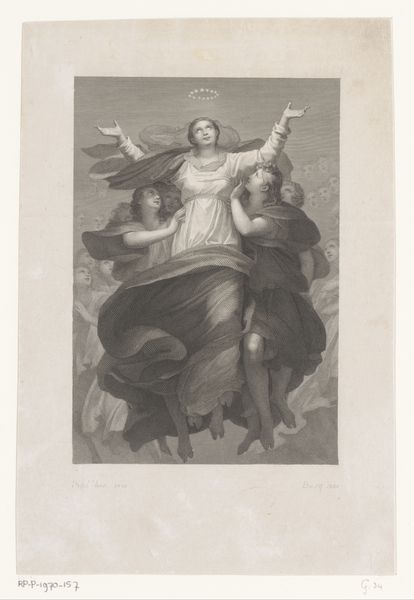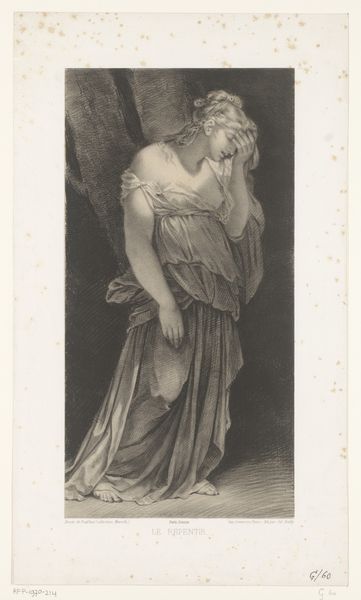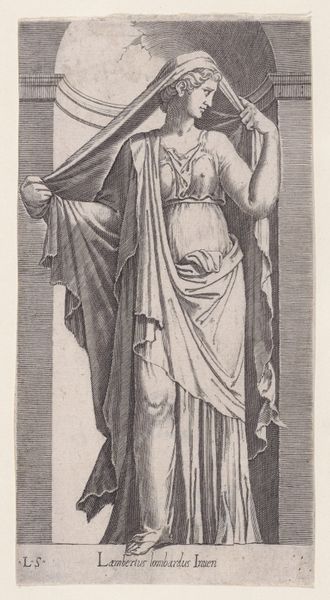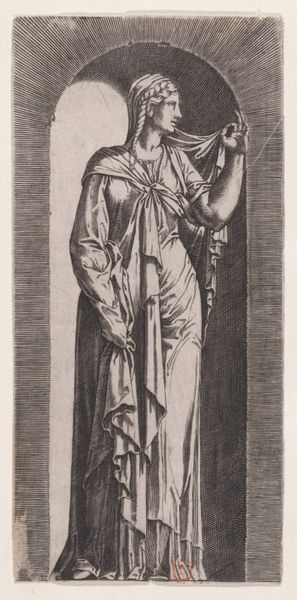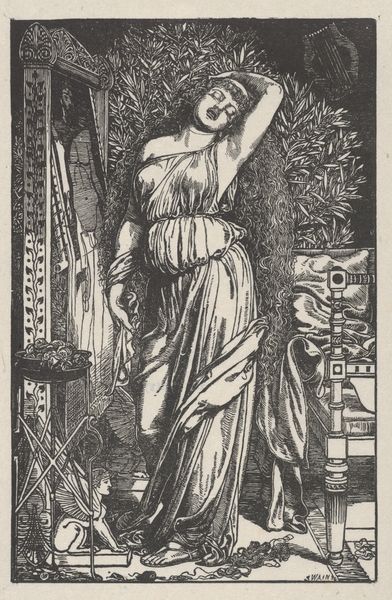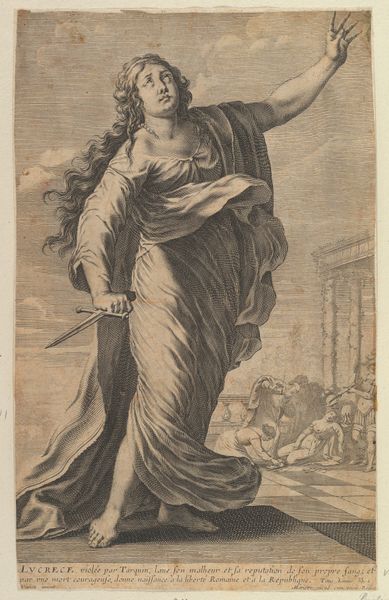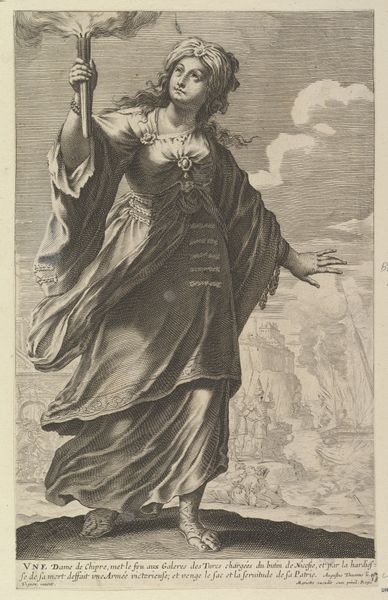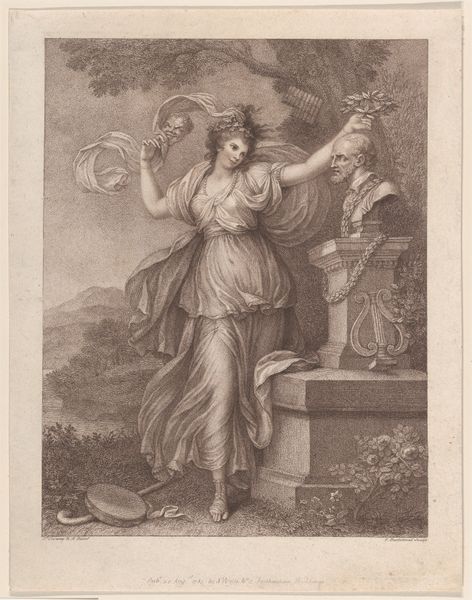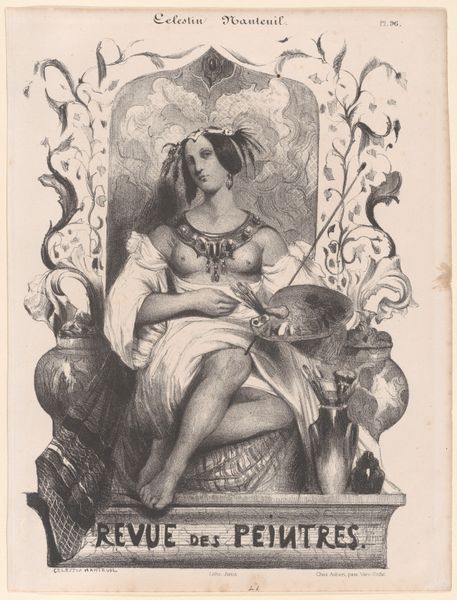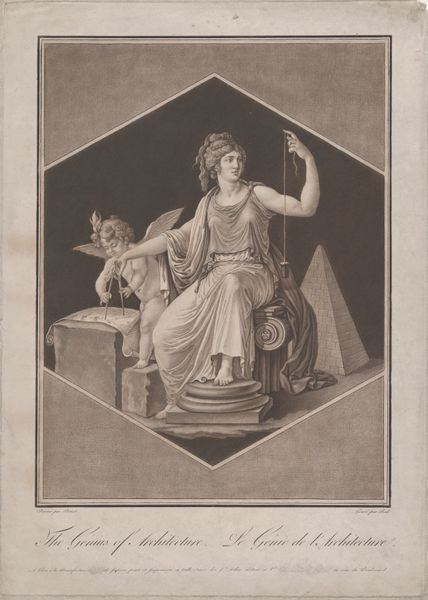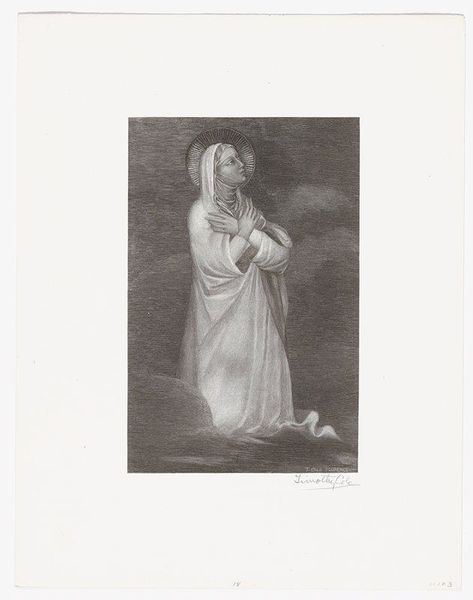
Dimensions: Sheet: 14 in. × 8 9/16 in. (35.5 × 21.7 cm)
Copyright: Public Domain
Editor: This is "Dar-Thula, from 'Illustrated London News,'" created in 1861, and now at the Metropolitan Museum of Art. It's an engraving, so a print. It’s quite dramatic. She's stepping over a fallen warrior with an almost haunted expression. What jumps out at you when you look at this piece? Curator: What strikes me is the materiality of the print itself. This wasn't intended as a precious object, but as a reproducible image disseminated through a widely circulated news publication. The labour involved in creating the engraving – the repetitive, skilled handwork – stands in stark contrast to its purpose: mass consumption and the rapid communication of news and narratives. How does this mass production and consumption affect our understanding of what the artist may have tried to represent? Editor: Well, knowing it was mass produced changes how I see the figure. She isn’t necessarily meant to be viewed as some unique person with this incredibly rich story; more as a broadly familiar figure of feminine strength, distributed across London? Curator: Precisely. Consider the socio-economic implications: The availability of such images broadened access to art and storytelling. It's about cultural narratives becoming available to the masses, a market eager for readily-consumed tales. Did the story change because of this change in means? How might the availability of inexpensive printed material challenge more traditional values of artistic production? Editor: That's a lot to consider. So it's less about the artistic genius and more about the social impact of accessible imagery and a changing sense of consumption of art. The actual means of production –the engraving and the printing itself – were designed for dissemination? Curator: Yes, exactly. Understanding the context of its production and consumption opens up new ways of interpreting the image itself, rather than simply focusing on aesthetics or subject matter alone. Editor: I never really thought of prints like that. Seeing how the work was made and how it reached its audience really adds a layer to the meaning. Thank you for your perspective. Curator: It highlights the relationship between art, labor, and society, giving this printed drawing new meanings. Thank you, too.
Comments
No comments
Be the first to comment and join the conversation on the ultimate creative platform.
